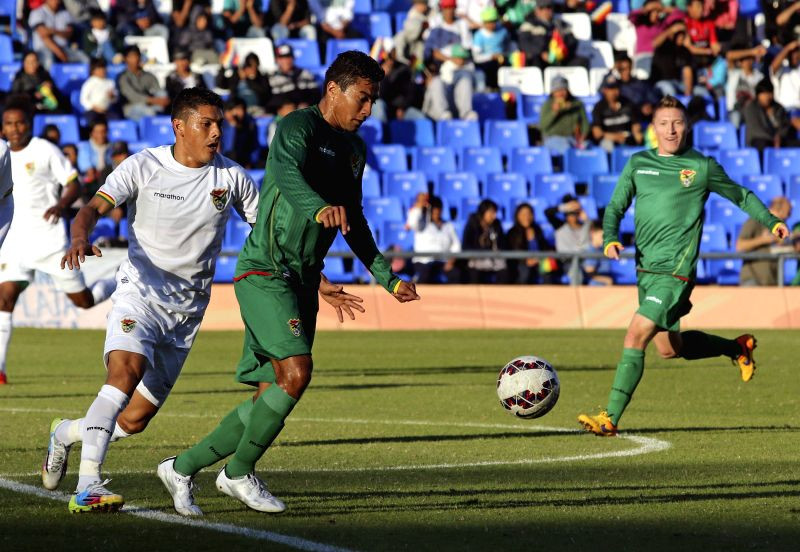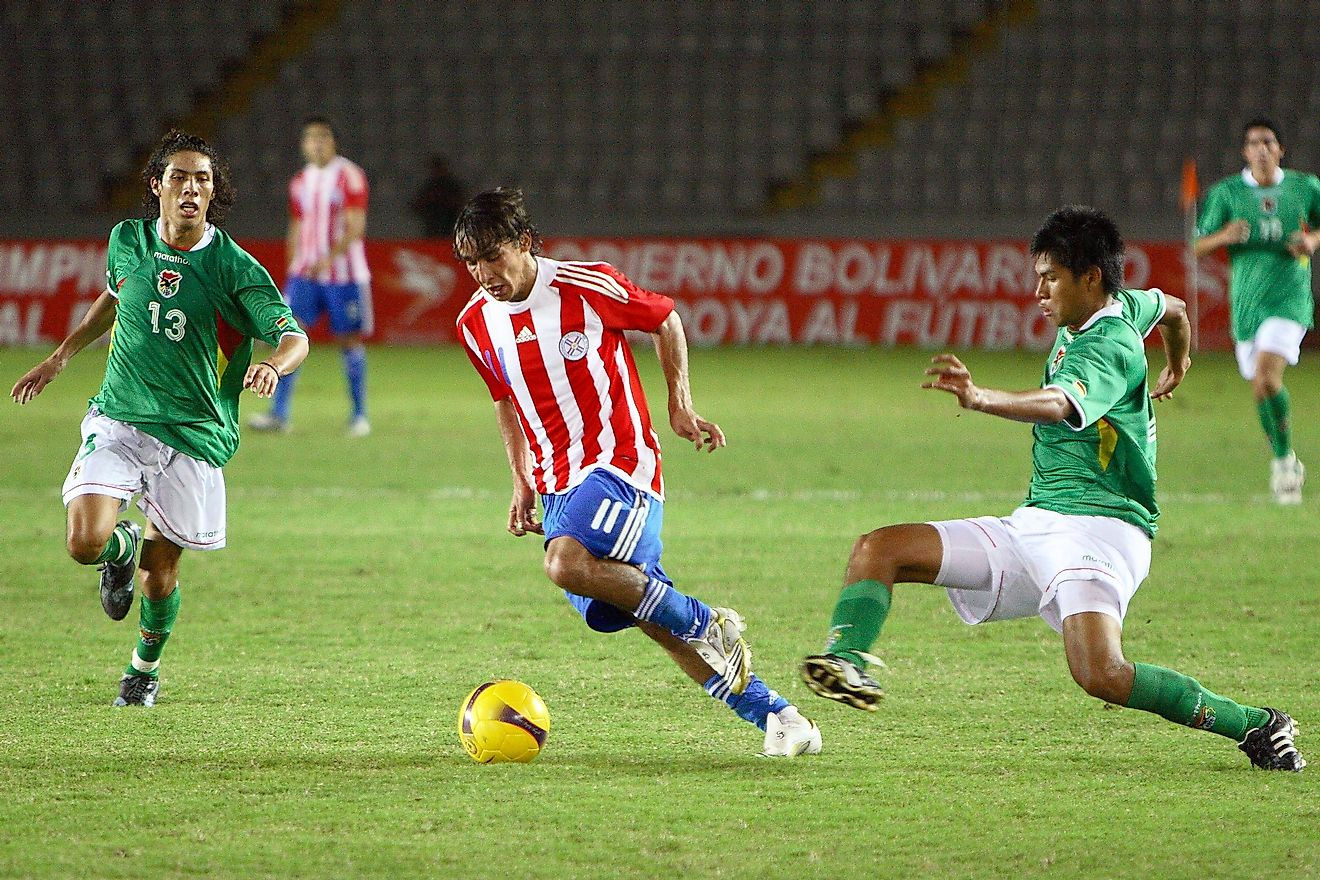The numbers and words painted on the artificial turf next to the pitch at Estadio Municipal de El Alto, in Bolivia’s highest and fastest-growing city, are a source of pride for the locals. They also serve as a warning to opponents.
“4150 MTS ALT. SE JUEGA DONDE SE VIVE.”
“We play where we live” is the slogan next to the four figures that lay bare what an extraordinary location this is for a football stadium. At 4,150 metres above sea level, the new home of the Bolivian national team in El Alto is about as challenging as it gets when it comes to playing at altitude.
Altitude Advantage: A Source of Pride and Controversy
Bolivia being a tough place to play football is, of course, nothing new. In his book ¡Golazo!: A History of Latin American Football, Andreas Campomar writes about how “Bolivian football has created a fortress from the thin air of the Andes” for years, making the country formidable opponents on home soil and contributing to some remarkable results, most notably a 6-1 victory over Argentina in 2009.
Diego Maradona, Argentina’s coach, was crestfallen. “Every goal was like a stab in my heart,” he said.
As for his players’ lungs, Maradona refused to use the high altitude in La Paz — 3,660m — as an excuse, which was probably wise considering he had played in the same stadium a year before, at the age of 47, to show his support for Bolivia after FIFA introduced a ban in 2007 on international matches more than 2,750m above sea level.
FIFA’s reasoning at the time was that high altitude was a potential health hazard for players and distorted fair competition — something Bolivia strongly denied. Evo Morales, the Bolivia president at the time, railed against what he described as “football apartheid”.
The ban was soon lifted and, eventually, La Paz could host international matches again, albeit the complaints from some countries — Brazil in particular — have never really gone away.
After a goalless draw at the Estadio Hernando Siles in La Paz in 2017, the Brazilian star Neymar posted an image on Instagram that went viral. “Inhuman to play in these conditions. Pitch, altitude, ball… everything is bad,” he wrote. The accompanying photo showed Neymar and his Brazil team-mates wearing oxygen masks on a sofa and armchairs, in full kit, at the end of the game. It was a bizarre scene.
A Bold Move to El Alto
Now, seven years on, Bolivia have taken things a step further by choosing to play games in El Alto; in fact, about 1,840 steps further if we’re counting in feet. El Alto’s elevation is 560m higher than La Paz — a city where tourists often need days, and sometimes even weeks, to adapt to the thinner air that forces their lungs to work harder to deliver oxygen to the bloodstream.
All of which makes you wonder how the Venezuela players will handle playing 90 minutes in El Alto — they have not complained about the change of venue, which was approved by CONMEBOL — and the extent to which Bolivia stand to gain from what has been described by the federation as a trial.
“Soccer is made of details. It does not mean that with this (changing stadiums) we are going to win,” Oscar Villegas, the Bolivia coach, told the Associated Press. “We are trying to take care of details that can allow us to be more effective.
“The psychological and emotional aspect also plays a role. It is something that is going to help us a lot.”
Desperation or Strategic Advantage?
Mindful that the national team has been in a state of turmoil — they have lost five of their six World Cup qualification games, leaving them second from bottom in the group, and also suffered three straight defeats at the Copa America in June – it is hard not to be cynical about the motivation behind the Bolivian Football Federation’s decision to play matches in El Alto, where the stadium capacity is significantly lower than in La Paz. In short, it smacks of desperation.
An alternative view would be that Bolivia are just making the most of their natural habitat and that it’s no different to a nation that typically plays games in extreme heat or sub-zero temperatures.
“I don’t think it’s an important aspect for Bolivia to win — I see it a different way,” Marco Etcheverry, who is considered one of Bolivia’s greatest footballers, tells The Athletic.
“Bolivia is going through a difficult moment in terms of players, directors — they have lots and lots of problems now. The organisation that defends the players — the union — isn’t in dialogue with the directors. It’s very bad.
“They’ve appointed a coach who is a great friend of mine and who I have a special affection for, to withstand people so that they don’t get too angry because they wanted a Bolivian coach. I think they did it (moving games to El Alto) more to pacify the fans. I think they think they will win in El Alto — hopefully, they do. But I don’t think it will be a great advantage for Bolivia.”
Debunking the Altitude Myth
How much playing at high altitudes has helped Bolivia over the years has long been a matter of debate. There is a school of thought among some in Bolivia that all the talk about altitude gave the team a psychological edge over opponents more than anything else and that the possible physical effects, which can include nausea, headaches, fatigue and vomiting, are often overplayed.
What we can say for sure is that Bolivia have been a completely different proposition on home soil. Thirteen of their 15 points in the 2022 World Cup qualifiers were picked up in Bolivia and it was 14 in the previous campaign, which included another win over Argentina (2-0).
In fact, probably the best way to illustrate the difference playing at home makes to Bolivia is by looking at their away form. Bolivia have won only one competitive match outside of the country in the past 28 years.
For any teams travelling to Bolivia, adaptation is viewed as key. Mario Kempes, a World Cup winner with Argentina, tells a story about how the national team coach Omar Sivori decided to pick two totally different teams to face Bolivia at home and away in 1973, when the fixtures were only 14 days apart, in order to allow one set of players to acclimatize to high altitude. Kempes was in the so-called ghost team that won 1-0 in Bolivia.
“It is very hard to play at high altitude, you feel it. But it’s doable,” Kempes told The New York Times in 2009. “We went 15 days before to prepare. It was the right way. You do need extra time. But today, there is very little time.
“Yes, some countries have altitude on their side, but if you don’t have the players, it really is not an advantage.”
That chimes with Etcheverry’s views. “I think the altitude myth used to be a source of fear, but now with technology, you can do studies of everything — from what you have to eat to counteract the altitude, to the time at which you need to drink water, what quality of food you need, the rest, and specific training. Now teams go there (to Bolivia) and have fewer problems than previous times because managers are prepared.”
That is not to say there are no physical effects from playing at high altitudes. “The recovery is what’s slower,” explains Etcheverry. “It doesn’t stop you from running: you do everything the same. The only problem is when you make an effort, your recovery isn’t as quick. If there’s a move in which you make a big effort, you run 30m and put in a cross — you can do that. But running back and taking a breath is what’s difficult. That’s what costs you.”
The Unpredictable Ball
Then there is the unusual behaviour of the ball to take into consideration. When Daniel Passarella was in charge of Argentina, they lost an away game against Ecuador in 1996 in Quito, a city more than 2,800m above sea level, prompting the coach to make a comment that has never been forgotten. “En la altura la pelota no dobla,” Passarella said afterwards.
So was Passarella right — is it true that the ball doesn’t bend at altitude or, at the very least, behaves differently?
Etcheverry smiles. “The speed, the time, the space the ball covers is different, that’s true,” he says.
“It goes faster,” Etcheverry adds, gesturing with his hand to show the sudden change in trajectory. “It’s like the ball goes in a straight line, let’s say, and it doesn’t have that downward curve at the end when it falls. It falls (immediately), which is complicated for goalkeepers.”
Claudio Taffarel, the former Brazil goalkeeper, could hardly blame altitude for Etcheverry’s shot from an acute angle pinballing between his legs and over the line in 1993, when Bolivia inflicted a famous 2-0 defeat over the team who would go on to win the World Cup 12 months later.
Bolivia qualified for the World Cup finals in the United States in 1994, but they have not managed to return to that stage since. A new journey to try to put that right starts in the unlikely environs of El Alto tonight.
The Future of Bolivian Football at Altitude
While the move to El Alto may be seen as a gamble by some, it certainly represents a bold step by Bolivia. The question remains: will this higher altitude prove to be a game-changer for the Bolivian national team, or will it be just another chapter in a long story of struggle and disappointment? Only time will tell if this ambitious move will lead to success on the pitch for Bolivia.



















